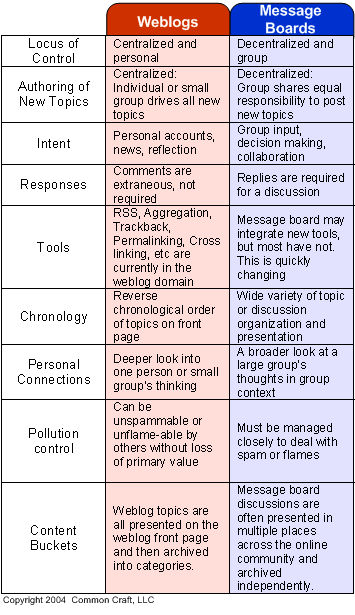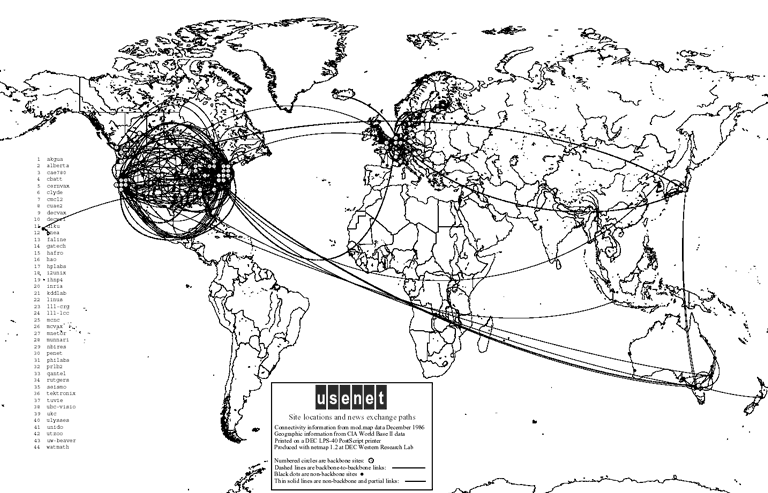
When the Web was invented, the collected Usenet News archives were imported by Dejanews.com, which was subsequently purchased by Google. Old news posts are available in Google archives, preserving that history.
Today, many Web sites incorporate threaded discussion forums. Perhaps the most common discussion forum application is user support for hardware and software products. In a mature product support group, the users help each other with their problems.
Google, Yahoo and others also offer platforms that can be used by any group of people with a common interest to create a threaded discussion forum.
Here are some common-interest forums I follow:
You might like to participate in this threaded discussion about students, technology and education.
We might compare threaded discussion groups with blogs. The biggest difference is that a blog is usually controlled by one or a relatively small group of authors, with readers give feedback by leaving, possibly monitored, comments. With a forum, anyone can start a new topic. This table summarizes other differences:

The table was taken from a blog post, which elaborates on each point and has several comments.
An historical example
This map shows the distribution of Usenet News in 1981:

Note that news was often passed a few times a day over dial-up connections -- this application pre-dates the Internet. Note also that the distribution of link density is disturbingly similar to that of today's Internet -- the digital divide is persistent.
Usenet News groups concerned with banking, commerce, networking, and politics began in the Soviet Union before its breakup. Shortly after the breakup, there was a military coup attempt in which Gorbachev was placed under house arrest. This prompted Vadim Antonov, a Russian networking pioneer, to post the following comment to the talk.politics.soviet news group:
Oh, do not say. I've seen the tanks with my own eyes. I hope we'll be able to communicate during the next few days. Communists cannot rape the Mother Russia once again!Soviet media were quickly shut down, but the talk.politics.soviet usenet News group continued circulating information within the Soviet Union and between the Soviet Union and the outside world. Thus people in Russia knew what, if anything, the army was doing other major cities, they new how the story was being covered in the outside world, and they could get information out -- most famously, Yeltsin's speech while standing on a Soviet Army tank in front of the parliament building. This was one of the first examples of a networked application with political implications.
For more on the Soviet coup attempt, there is an archive with all Usenet News traffic into, out of, and within the Soviet Union at the time. (The files are ASCII text and can be read using a text editor). A short summary with several quotes is available here. A short video is here